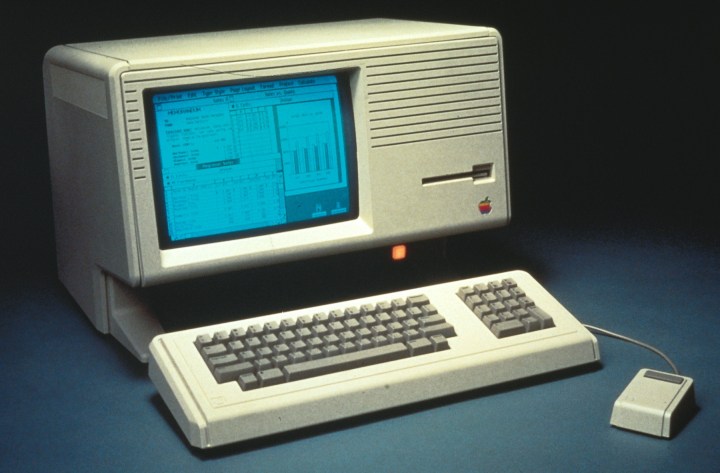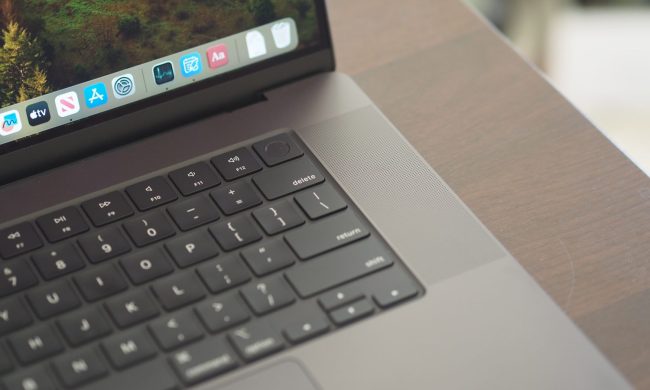
Today marks 40 years since Apple released the very first Mac, upending the entire computer industry and sowing the seeds for four decades of success for the company. Dubbed the Macintosh 128K, the device was an unprecedented success for Apple, and it quickly became one of the most important Macs ever. It also has curious parallels to the company’s situation today.
It’s easy to look back now with fondness at the impact the product made — a familiar piece of tech history that still undergirds so much of our current technology. But at the time, it was the start of something new. A bold, risky, and unprecedented leap forward. It’s hard not to make comparisons to the Vision Pro, which officially launches just next week. But will we look back in 40 years at the Vision Pro with the same kind of reverence? Perhaps, but only if Apple learns the right lesson from its own history.
A computing revolution
When the Macintosh 128K was first released on January 24, 1984, it became an instant hit. The New York Times said it “presages a revolution in personal computing,” and the excitement at the time was palpable. Small and lightweight, it was a proper “home computer” at a time when most alternatives were anything but.
Why was it so exciting? Namely because it popularized a bunch of core concepts that we now take for granted, including the mouse, the desktop metaphor with app windows, and the entire idea of graphics-led (rather than text-led) computing. The Macintosh wasn’t the first computer to implement these things, but it was the first to do them in a way that captivated the public.
Apple’s approach — of not trying to be first, but trying to be best — worked so well that it is still the attitude Apple employs today. But that’s not the only lesson from its trailblazing computer that Apple needs to bear in mind today.

At the time, the Macintosh 128K was the response to a far less successful Apple computer: the Lisa from just one year prior. That device was originally headed up by Steve Jobs and became something of a pet project for the Apple founder (he even named it after his own daughter).
It was full of high-end components and bold new ideas, the graphical user interface being one of them. But because of that, it had an extremely high price tag: $9,995, which is almost $30,000 today.
Compare that to the Macintosh 128K’s starting price of $2,495 (or around $7,000 today) and it’s easy to see why the Lisa struggled to gain traction while the Macintosh soared. What’s more, Steve Jobs was forced off the Lisa project in 1982 and took over development of the Macintosh, running it almost as a vendetta against his old Lisa team. When you have an adversary like Steve Jobs, that’s never a good thing.
Reviewing the Apple Lisa at the time, Byte magazine wrote: “Apple knows this machine is expensive and is also not unaware that most people would be incredibly interested in a similar, but less expensive machine.”
Sound familiar? That’s more or less exactly my sentiment when it comes to the Vision Pro.
Learning the right lessons

Right now, the Vision Pro is like the Apple Lisa. While it’s technically astounding and way ahead of its competitors, it’s also too expensive to ever really go mainstream. Most people are unlikely to fork out $3,499 on an unproven piece of technology, just as most consumers were unwilling to spend almost $10,000 in 1983 on what was then a very niche product.
Instead, Apple needs to follow up the Vision Pro with its own version of the Macintosh 128K. We need to see a more affordable Vision Pro before the momentum is lost, because I’m willing to bet most people would rather have a cheaper headset that can’t quite do as much than an incredibly high-end product that’s wildly out of their financial reach.
Luckily, the rumors suggest that a cheaper Vision Pro is already in the works. According to Bloomberg’s Mark Gurman, this model will drop the display quality, use an older chip, come with fewer cameras, and make a few other cuts. That will allow Apple to charge roughly half the price of the original Vision Pro — and given how powerful that headset is and how much Apple hates to be outdone, the cheaper version could still outshine every other VR headset on the market.
The less expensive headset can’t come soon enough. If Apple really wants to make a mark in the world of what it calls “spatial computing,” it needs to learn the lessons of the Lisa and the Macintosh 128K. Now, 40 years later, it has the perfect opportunity to do just that.



